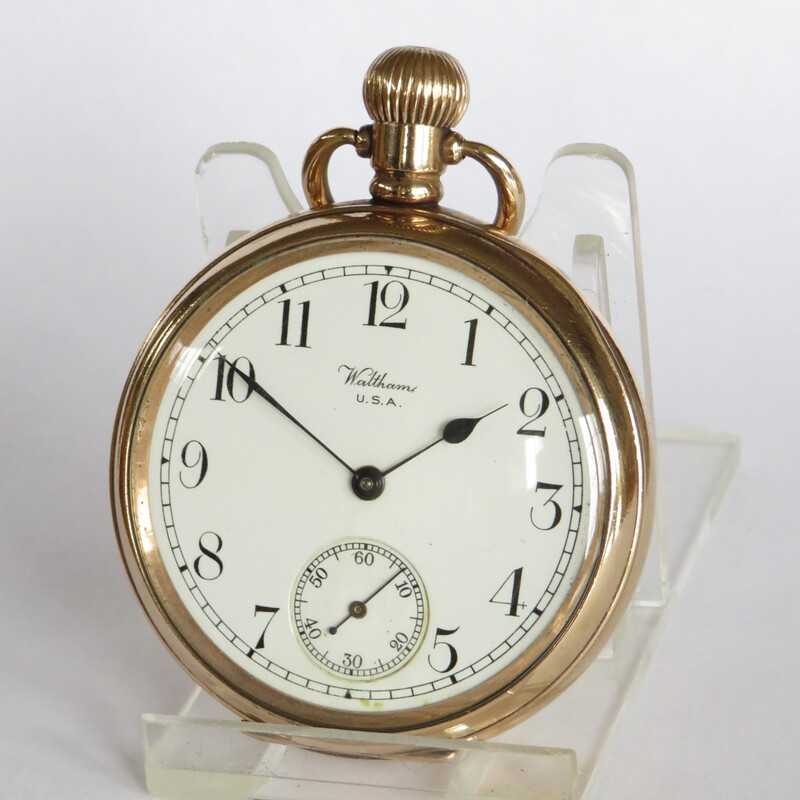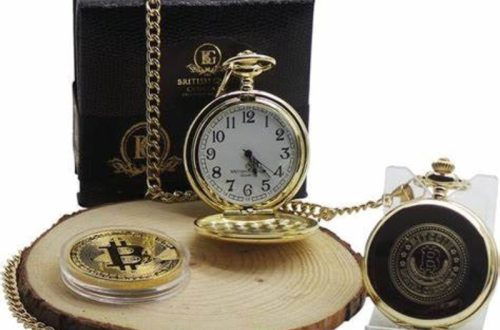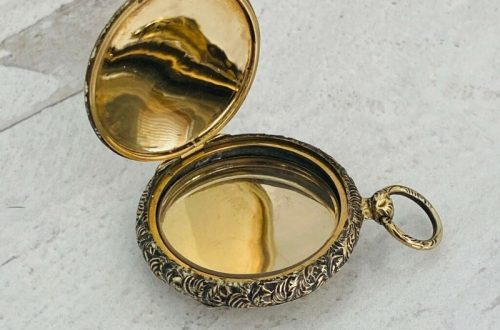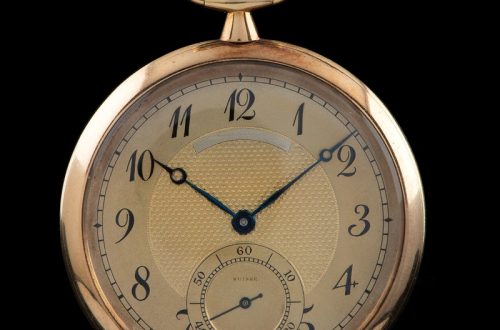The Dawn of the Pocket Watch Era
The 1920s echoed with the ticking of elegant timepieces. The pocket watch era was at its apex. In this decade, craftsmanship and artistry met functionality in a seamless blend. Pocket watches were not just devices for keeping time. They were fashion icons, status symbols, and treasured heirlooms.
Precious metals and intricate designs were common on 1920s pocket watches. Jewelers often embellished them with gold, silver, and even engravings. Some had covers that protected the face, called hunter cases. Others, known as open-face watches, displayed their full glory at first glance.
In the 1920s, pocket watches were a fixture in daily life. Men typically carried them in waistcoat pockets, attached by a chain for secure fastening. Women sometimes wore them as pendants, adding a touch of sophistication to their attire.
The 1920s pocket watch wasn’t just a trend, it was the standard. During this era, watchmakers honed their craft to perfection. They created masterpieces that kept time with impeccable precision. The sheer dedication to quality set the groundwork for the luxury watchmaking we know today.
Today’s collectors seek out these vintage timepieces. They value the history, craftsmanship, and timeless style that each 1920s pocket watch embodies. For discerning individuals, starting a collection begins with appreciating the dawn of the pocket watch era.
When delving into the world of 1920s pocket watches, one steps back in time. They encounter an era when detail was paramount, and elegance was measured by the watch in one’s pocket.
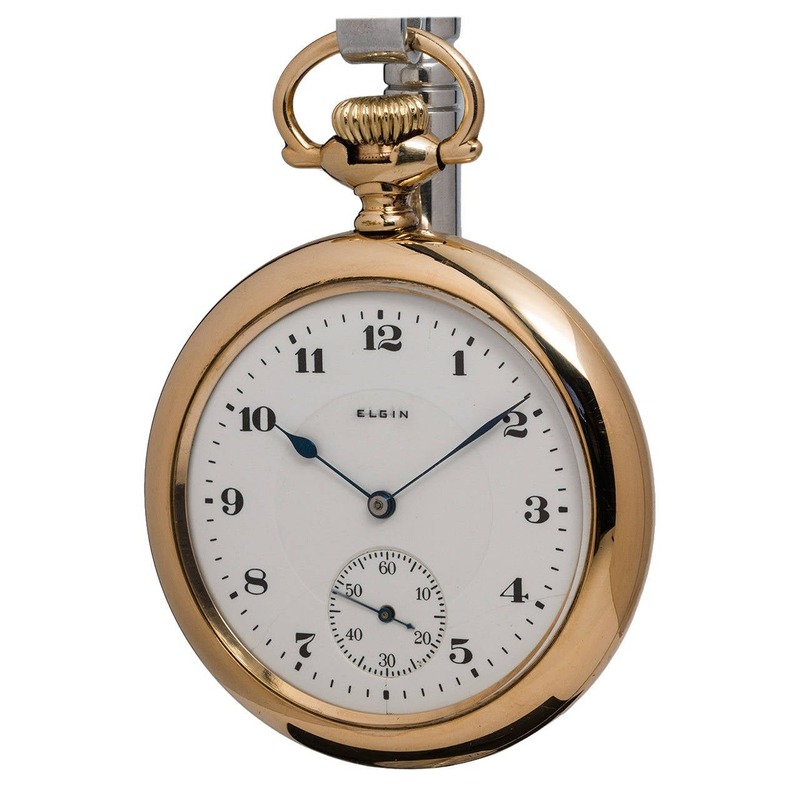
Iconic 1920s Pocket Watch Styles and Designs
The 1920s marked an era of distinct pocket watch styles and designs. Jewelers experimented with innovative shapes and sizes. One could find round, square, and even hexagonal cases. Craftsmen often used precious metals to express luxury and exclusivity. Gold and silver cases were especially popular during the time.
Core Features of 1920s Pocket Watches
Key features were intricate engravings and detailed ornamentation. Many 1920s pocket watches featured artistic etchings. These ranged from floral patterns to personalized monograms. Enamel work added color and flair to the watches. The artistry transformed each timepiece into a unique work of art.
Dials were also a canvas for creativity. Roman numerals were common, but some dials displayed Arabic numbers for a more modern look. Faces often featured a secondary dial. This small circle showed seconds ticking away, enhancing the watch’s functionality.
Popular Case Types: Hunter vs. Open Face
Case types fell mainly into two categories: hunter and open face. Hunter cases had a cover that shielded the watch face. This not only protected the glass but added an element of suspense before revealing the time. Open face pocket watches, on the other hand, displayed their dials openly. This invited immediate appreciation of the watch’s design and craftsmanship.
Watches were personalized with monograms or family crests. Such customizations made them prized possessions and meaningful gifts. Watch chains also became a focus of design. They were sturdy yet elegant, featuring links and fobs that complemented the watch’s aesthetics.
These iconic styles and designs of 1920s pocket watches became timeless. The era’s focus on elegance and individuality is still admired by collectors and fashion enthusiasts alike. Ingraining the 1920s pocket watch trends are essential for anyone interested in antique timepieces. Their enduring allure comes from the blend of functionality and sophistication that defined the decade.
The Craftsmanship Behind Antique Pocket Watches
The 1920s pocket watch was a marvel of craftsmanship. Meticulous skill was the hallmark of each timepiece. Skilled artisans spent countless hours on every watch. Their efforts resulted in watches that weren’t only timekeepers, but also masterpieces.
Watchmakers used the finest materials available to them. High-quality metals and jewel bearings were standard. Each component was fashioned with precision. Springs, gears, and cogs came together in harmonious motion. This ensured accuracy in time-telling, a testament to the maker’s expertise.
Engraving was a common practice among craftsmen. It turned each pocket watch into a personal statement. Engravings ranged from subtle to ornate. Owners took pride in these bespoke elements. They often reflected the status and taste of the wearer.
In the 1920s, the creation of a pocket watch was a careful process. It began with designing and carried through to final assembly. Watchmakers paid attention to the smallest detail. This ensured no two watches were exactly alike. The individuality of each piece added to its charm and value.
The legacy of this craftsmanship lives on. Today, collectors and enthusiasts treasure these antique pocket watches. They represent a bygone era of quality and elegance. Understanding the craftsmanship behind these watches deepens one’s appreciation for their lasting worth.
How to Identify Authentic 1920s Pocket Watches
Identifying authentic 1920s pocket watches is essential for collectors and enthusiasts. Here are several indicators to confirm authenticity:
Examine the Materials
Authentic 1920s pocket watches often feature high-quality metals like gold and silver. Check for hallmarks that indicate purity. Watches from this era may also have real jewels within the movement.
Look for Craftsmanship Details
Craftsmen of the period took pride in detail. Search for intricate engravings and enamel work. These features are signs of the time’s high craftsmanship standards.
Inspect the Movement
The internal movement of a pocket watch reveals its age and quality. Authentic watches from the 1920s will have mechanical movements expertly assembled by hand, not mass-produced.
Research the Brand and Serial Number
Famous watchmakers of the era left their mark. Look for a brand name and serial number. These details can help verify the watch’s production date and authenticity.
Check the Style Elements
Patterns in watch cases, such as monograms or floral designs, can indicate a 1920s origin. Hunter and open-face cases were common during the period.
By following these tips, you can distinguish a genuine 1920s pocket watch from replicas or later models. Authentic pieces hold history and craftsmanship that make them unique and valuable.
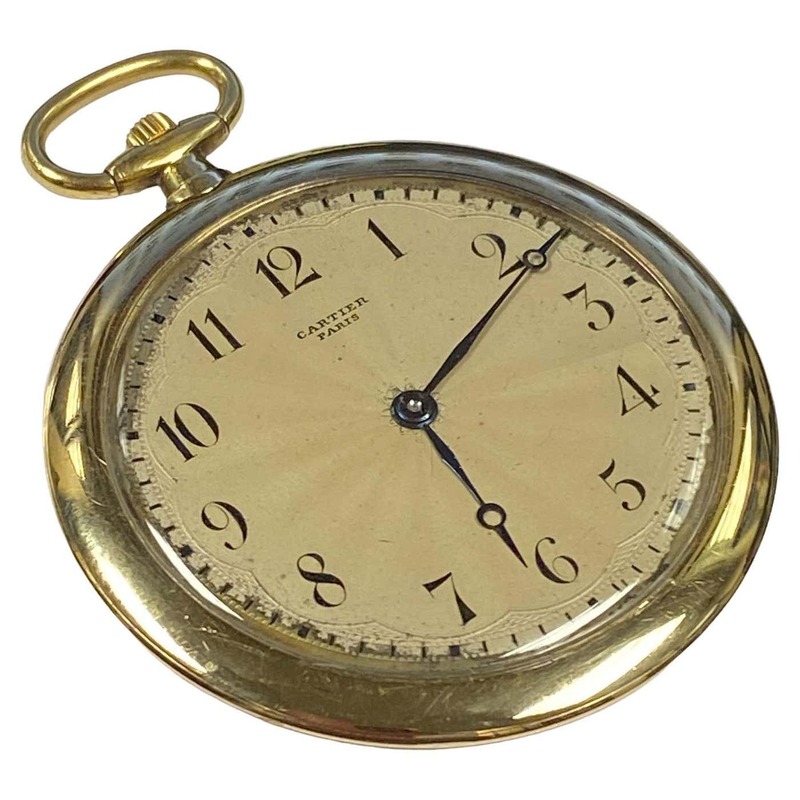
The Cultural Significance of Pocket Watches in the 1920s
In the 1920s, pocket watches were more than timekeepers; they held cultural weight. These accessories were vital in daily life and society. Today, we see watches as practical items, but back then, it was about prestige. A 1920s pocket watch showed social status and fashion sense. It was common for men of standing to have a timepiece. Reflecting elegance, pocket watches were statement pieces in the twenties.
Men and women wore these watches with pride. They were essential in a gentleman’s wardrobe. For ladies, they doubled as jewelry, enhancing their style. Pocket watches represented the era’s sophistication. They were part of a culture that valued appearance and social standing.
Carrying a pocket watch often meant one valued punctuality and reliability. These qualities were sought after in the fast-growing capitalist societies. Pocket watches also played a part in professional life. They allowed for precise timekeeping which was crucial for business.
In sum, 1920s pocket watches were emblematic of an age. They mirrored the values and aesthetics of the time. Their legacy continues as symbols of a fascinating past, cherished by collectors and history buffs.
Caring for Vintage Pocket Watches: Maintenance Tips
To keep a 1920s pocket watch running smoothly, regular care and maintenance are crucial. Here are some maintenance tips for ensuring the longevity of your vintage pocket watch.
Handle with Care
Always handle your antique pocket watch delicately. Avoid exposing it to extreme temperatures, moisture, or shocks, as these can damage the intricate internal mechanisms.
Regular Cleaning
Dust and dirt can accumulate over time, so it’s important to clean the exterior gently with a soft cloth. Be cautious not to force open any delicate parts.
Professional Servicing
Have your vintage pocket watch serviced by a professional every few years. They have the expertise to disassemble, clean, lubricate, and reassemble the watch correctly.
Winding with Attention
Wind your mechanical pocket watch regularly but with care. Over-winding can cause wear and tear, while under-winding might lead to inaccurate timekeeping.
Storage Solutions
When not in use, store your pocket watch in a dry and cool environment. A case or pouch can offer protection from scratches and dust.
Stay Away from Magnets
Keep your pocket watch away from magnets as they can affect the watch’s movement and accuracy.
By applying these simple maintenance tips, your 1920s pocket watch can remain a stunning and functioning piece of history. This respect for past craftsmanship can make you a discerning collector and aficionado of vintage timepieces.
The Resurgence of Pocket Watch Collecting
The charm of the 1920s pocket watch continues to captivate collectors today. The intricate craftsmanship and timeless style of these antique timepieces have sparked a resurgence in collecting. As enthusiasts search for pieces that connect them to a bygone era, the appeal of pocket watches only grows stronger.
Collectors are drawn to the unique stories behind each watch. Every 1920s pocket watch comes with a narrative of its past. It could be about the original owner, its craftsmanship, or the era it represents. These stories add a personal touch that transcends time and brings history to life.
The process of collecting pocket watches is also a treasure hunt. Aficionados scour antique shops, auctions, and online marketplaces for rare finds. The thrill of uncovering a hidden gem that has been lost to time is unmatched. Collectors take pride in restoring and preserving these watches, ensuring they tick for generations to come.
Furthermore, the knowledge shared among pocket watch collectors creates a vibrant community. Collectors exchange information on the history, maintenance, and value of their timepieces. For newcomers, this community provides guidance and enriches the collecting experience.
The resurgence of pocket watch collecting is about more than just acquiring antiques. It is about preserving craftsmanship, celebrating history, and joining a community of like-minded individuals. This growing interest ensures that the 1920s pocket watch elegance continues in the 21st century and beyond.
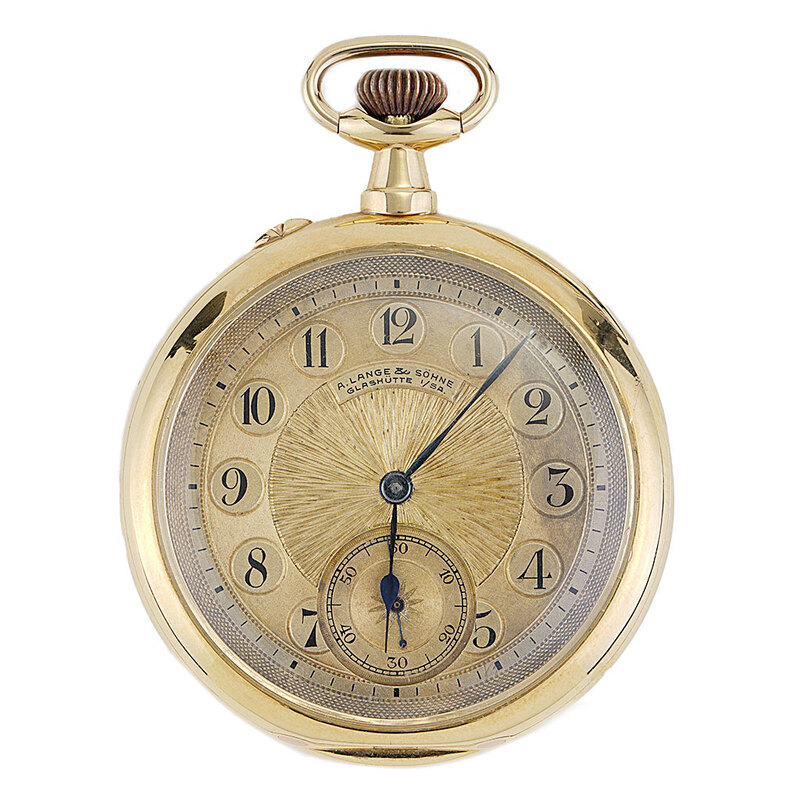
Integrating Vintage Pocket Watches with Modern Fashion
Vintage pocket watches from the 1920s conjure an era of undeniable elegance. Today, they have found a unique place in modern fashion. Integrating these timeless pieces into contemporary style showcases a nod to the past. It also adds a layer of sophistication to any outfit. Here’s how you can incorporate a 1920s pocket watch into your modern wardrobe:
Pair with Classic Attire
A pocket watch pairs best with classic clothing choices. Think tailored suits and waistcoats with a dedicated pocket for your timepiece. A watch chain adds to the charm.
Combine with Casual Outfits
For a less formal look, attach your pocket watch to belt loops. Wear it with jeans and a blazer for a chic, smart-casual appeal.
Use as an Accessory
Ladies can drape pocket watches like pendants for an elegant accessory. It works well with dresses and high-neck blouses.
Embrace the History
When wearing a 1920s pocket watch, share its story. A conversation piece with historical significance always intrigues.
Focus on Subtlety
Don’t let the watch overwhelm your look. It should complement, not dominate. Choose subtlety over extravagance.
Maintain Functionality
Make sure your vintage watch keeps time accurately. It should be as reliable as it is stylish.
By marrying a vintage pocket watch with modern style, you create a timeless look. This blending respects the past’s craftsmanship while celebrating current trends.
